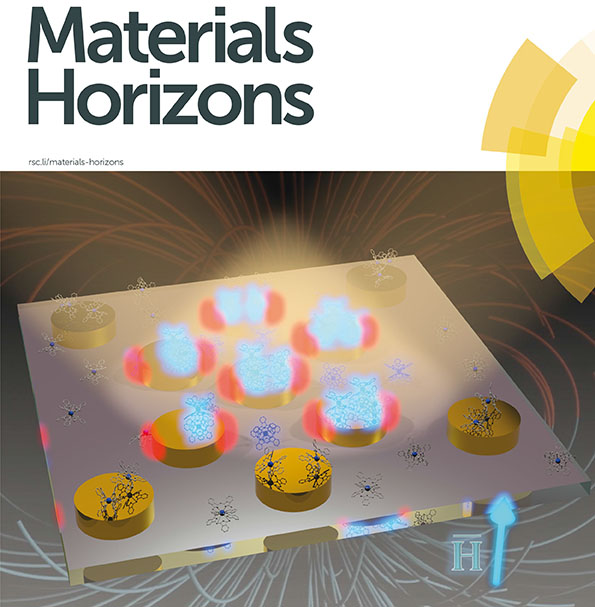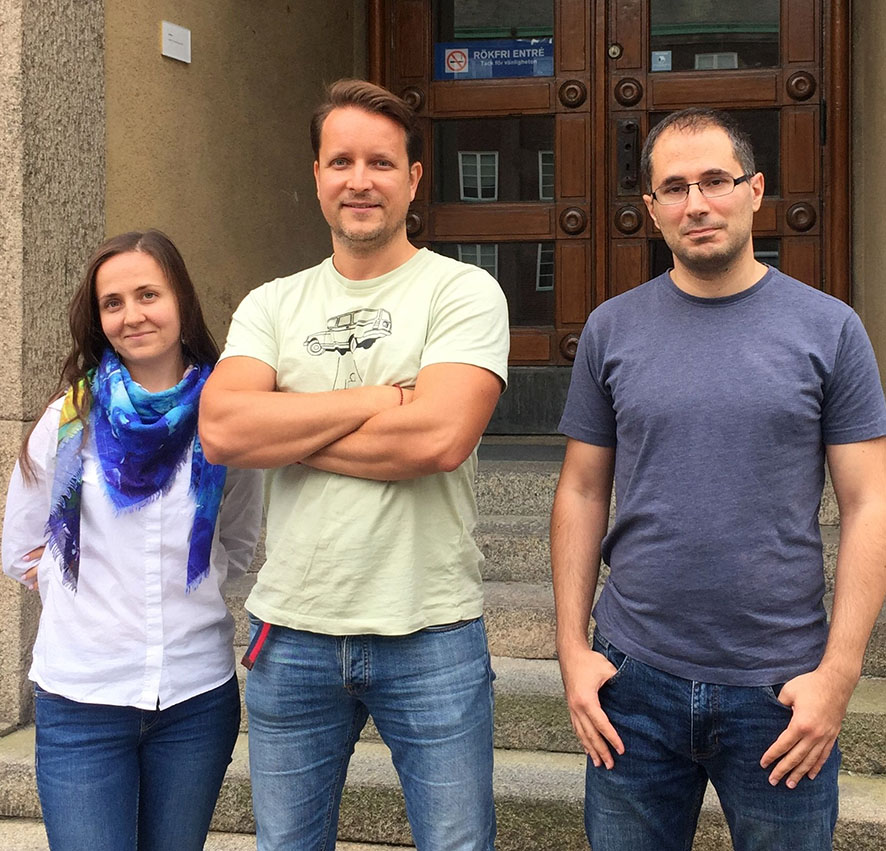- Home
- News and events
- Find news
- Magnetic discovery paves the way for molecular memories
Magnetic discovery paves the way for molecular memories

Illustration: Viktar Asadchy.
As more and more information gets stored in the cloud, the huge demand for data storage facilities grows even bigger. Break-throughs from the University of Gothenburg with other European partners could dramatically improve capacity of digital memories.
For decades, the ultimate magnetic memory was envisioned as a single magnetic atom, able to be assembled into futuristic memory chips.
“There is huge appeal in using single atoms as memory bits, and it’s fundamentally proven possible. However, at room temperature, the atoms move too much and it’s difficult to put a single one in place. Organic molecules can be used to ‘stitch’ everything together and potentially form arrays of single magnetic atoms that are reasonably stable,” says Professor Alexandre Dmitriev.
Before using molecules as memory units, it’s necessary to improve how they are detected, which has now been done through the EU Femtoterabyte project, helmed by scientists from the University of Gothenburg.
The fundamental problem of handling such small magnetic memory units is that it is extremely hard to detect a magnetic signal from them, which would be necessary for reading the stored information. Traditionally, it takes huge, kilometer-sized machines called x-ray synchrotrons for doing that, as only such machines provide the needed magnetic sensitivity.
Worked out a simplified method
Now the situation has changed. According to the consortium of researchers from the University of Gothenburg,  University of Pisa and the University of Florence, whose work has recently been published as a cover story in the prestigious journal Materials Horizons it is now possible to work with and detect single-molecule magnets in a conventional lab, using a commonly available equipment.
University of Pisa and the University of Florence, whose work has recently been published as a cover story in the prestigious journal Materials Horizons it is now possible to work with and detect single-molecule magnets in a conventional lab, using a commonly available equipment.
The new, simplified method is enhanced by optical antennas and uses the so-called magnetic circular dichroism, where the right- and left-circularly-polarized light is absorbed differently by the magnetized single-molecule-magnets.
“Our results provide a tool to everyone in the world working in this field that will let them characterize magnetic properties without the need of large experimental facilities. In the long term, the dream is to actually use such systems in ‘molecular memory’ or, alternatively, in molecular-based quantum computing,” says Alexandre Dmitriev.
The findings are not only a great advancement on the road to single-atom magnetic memories, but a testament to the importance of bridging the gaps between separate fields in physics.
"The beauty of combining different fields – in this case molecular magnetism and nano-optics – is that something substantial for both fields can emerge,” says Alexandre Dmitriev.
Text: Carolina Svensson
Contact: Alexandre Dmitriev, alexd@physics.gu.se ,0708-423819
Illustration: Viktar Asadchy, Department of Electrical Engineering, Stanford University, Stanford, California 94305, USA.
Photo: Evgeniya Smetanina, Alexandre Dmitriev and Esteban Pedruesa.